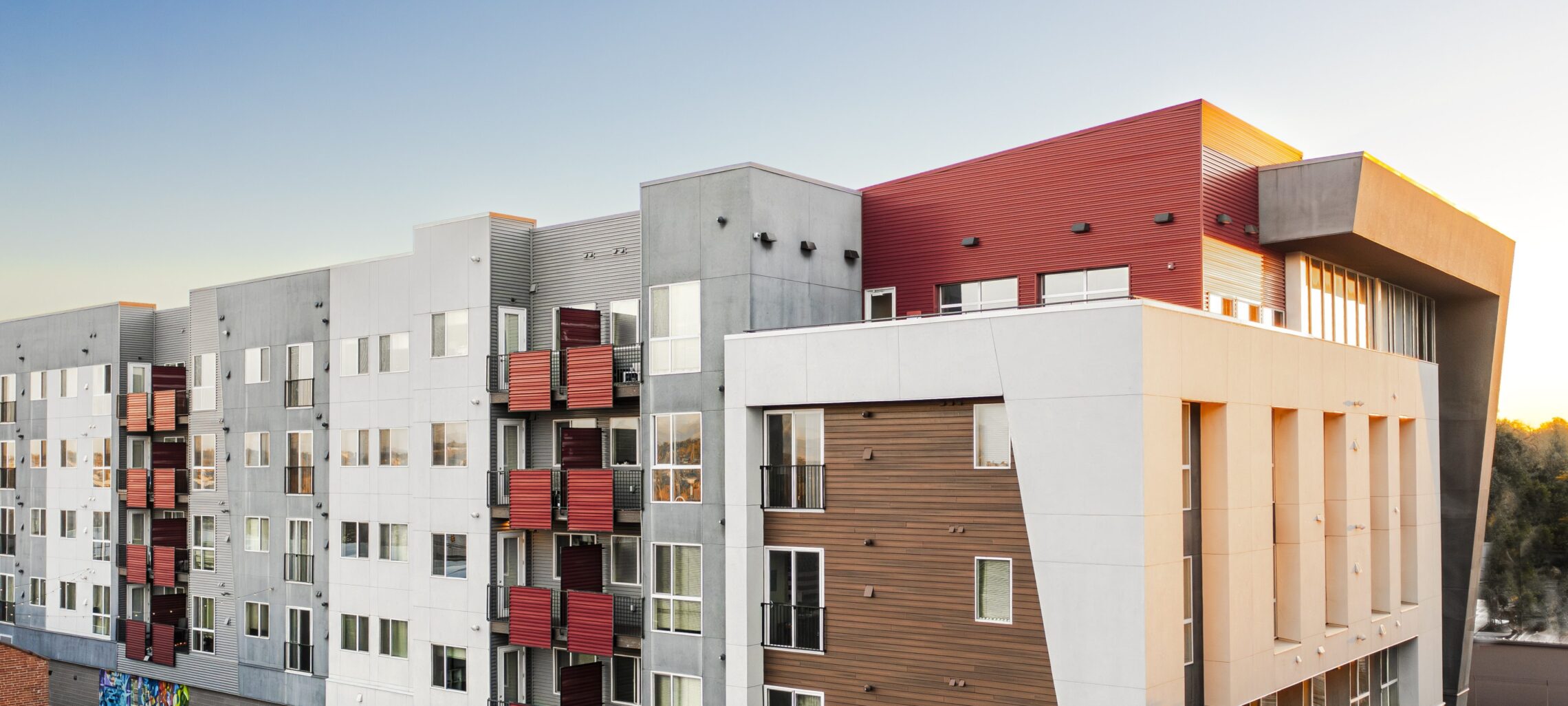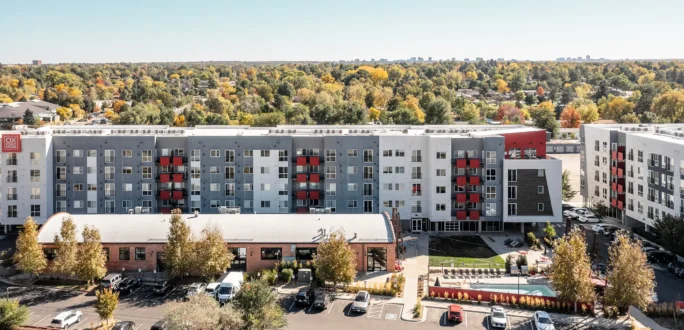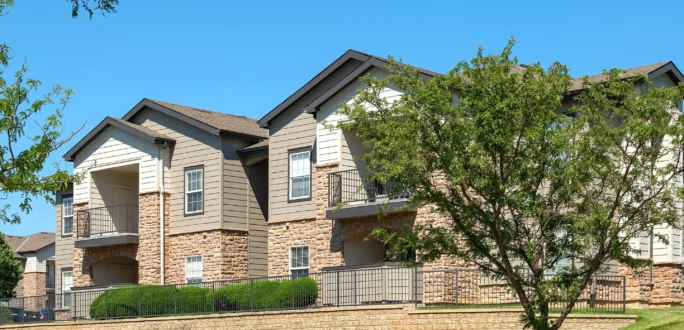
5 Reasons Multifamily Is an Anchor in Turbulent Times
 Growing demand is just one reason for maintaining or increasing allocations, writes David Nelson.
Growing demand is just one reason for maintaining or increasing allocations, writes David Nelson.
2025 has certainly seen a lot of turbulence and uncertainty on the domestic and global economic fronts.
Real and potential new tariffs, extreme volatility in the stock market, ongoing inflation and rising anxieties about the U.S. bond market mean more investors and their advisers could turn to physical assets like multifamily real estate to diversify their portfolios and provide protection in these tumultuous times.
As part of the broader real asset category of alternative investments, multifamily properties are appealing because of their ability to generate income, provide long-term appreciation of capital and their foundation in tangible, demand-driven fundamentals.
Below are five factors that investors should consider as they contemplate before investing in apartments or expanding their multifamily holdings.
1. New supply is decreasing
The delivery of new units is expected to decline significantly moving forward, due to tighter construction lending conditions—setting the stage for higher occupancy rates and stronger rent growth across existing apartment stock. Equity markets have dried up and banks have pulled back on lending, leaving little available capital for new development. Additionally, many land sites are tied up in construction plans but remain inactive and undeveloped. Restarting development takes time: Even after capital returns, it could take two to three years to fully ramp back up. As a result, new construction may remain minimal—or even nonexistent—over the next three years.
As Yardi Matrix noted in a first-quarter 2025 supply forecast, apartment construction starts dropped substantially last year. “Multifamily construction starts through the first three quarters of 2024 declined roughly 40 percent below the level recorded through the first three quarters of 2022 and 2023,” the report noted.
The construction pipeline is still high, but with the decline in starts, the delivery of new communities should drop from a record of 613,514 in 2024 to 341,020 in 2027, a decrease of just more than 44 percent, according to Yardi Matrix. In addition, projections of household formation and annual residential construction over the next two decades by the Harvard Joint Center for Housing Studies indicate that renter demand could remain strong over the long term.
2. Homeownership remains expensive
In April 2025, the median home sale price in the U.S. was $437,864, an increase of 45 percent from five years earlier, according to Redfin. Along the same lines, an analysis by Fixr, a home improvement website, found that the median U.S. home price has increased by 197 percent over the past 25 years, while the median household income has risen by only 40 percent during that time frame.
Today’s relatively high interest rates add to the burden of purchasing a home—and those rates could rise if the federal deficit continues to climb. Add these factors up, and it’s reasonable to believe that many households will remain in the renter pool and bolster future demand for apartments.
3. Renters like the renting lifestyle
An additional reason to be optimistic about the future performance of apartments stems from the fact that, for an increasing number of people, renting has become a deliberate, long-term lifestyle choice. Today’s renters value the flexibility to relocate easily for jobs or personal reasons—a freedom that homeownership doesn’t provide.
A 2024 survey conducted by The Harris Poll on behalf of Credit Karma found that 58 percent of respondents who rent or lease goods and services say they live a rent-first lifestyle, meaning they choose to rent as a personal choice and not because of affordability or other reasons. In addition, 57 percent of respondents who rent or lease goods and services care more about the flexibility of renting than they do the benefits of ownership.
The demand drivers outlined above can lead to relatively predictable cash flows for apartment communities, particularly in regions with a strong supply-demand balance and robust population growth.
4. Multifamily can serve as a hedge against inflation
In an inflationary environment, real estate assets—which can be good investments in both bull and bear markets—provide a partial hedge due to their intrinsic value and replacement cost.
Apartment properties, in particular, are especially valuable when it comes to reducing the impact of inflation on investors. This is because (1) apartments feature short-term leases that allow for relatively frequent adjustments in rent, (2) owners and operators of the communities can enhance their value through capital improvements and repositioning, and (3) investors can reduce their taxable income through tax benefits such as depreciation.
5. Not all multifamily investments are created equal
When contemplating multifamily investments, investors should remember that apartment communities are certainly not immune to economic or operational risk.
Rent growth and high occupancy are not guaranteed, and the former may be held in check because of local regulations and/or affordability factors. Additionally, high inflation and increased interest rates can compress margins, particularly in regions with limited growth potential.
It’s important for investors and their advisers to research multifamily sponsors and to invest with sponsors that have a proven track record of acquiring communities in strong markets. Sponsors with the right acquisition and property management expertise can maximize property value, NOI and investor’s financial benefits by implementing operational efficiencies, expense control, capital improvements, sustainability measures and quality marketing and resident retention campaigns. Successful sponsors also understand the benefits to investors of not over-leveraging their assets and debt replacement. On the flip side, the wrong sponsor can deliver poor investment results even when their properties are amid favorable market conditions.
With the volatility and uncertainty in today’s economy, investors are reconsidering how they allocate their dollars across asset classes. As an alternative investment and a tangible asset, apartment communities offer a combination of physical durability, potential income, capital growth and tax benefits that can increase the resilience of an investor’s overall portfolio. While multifamily is not a replacement for other core investment classes, it can play a complementary role in a well-constructed portfolio by providing diversification from traditional equities and fixed-income vehicles.
Simply stated, investors and their financial advisers would do well to take a good look at multifamily.
David Nelson is president and chief investment officer of Hamilton Zanze.
This article was originally published in Multihousing News.





